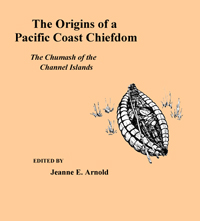
From The University of Utah Press:
The fascinating story of the emergence of politically and economically complex societies without agriculture is told from the North American Pacific Coast, where a number of unusual hunting-gathering-fishing societies thrived during the last 1,000-2,000 years. The Origins of a Pacific Coast Chiefdom focuses on the origins and development of complexity among the Channel Islands Chumash of southern California, who had large settled villages, sophisticated oceangoing boats, many goods produced by specialists, and an extensive shell bead exchange system. Volume authors interweave theoretical concerns about production, distribution, labor organization, and the political economy with detailed primary data presentations (ethnohistory, shellworking, lithic production, faunal exploitation, tool production, paleobotany, etc.) and compare processes of cultural evolution in the Chumash area and other regions of California with those in the Northwest Coast and Florida.